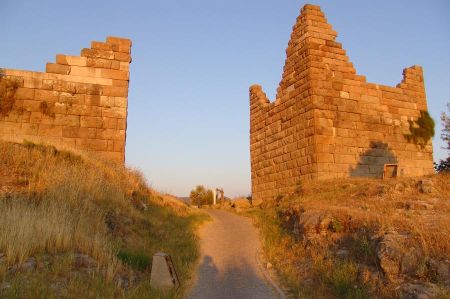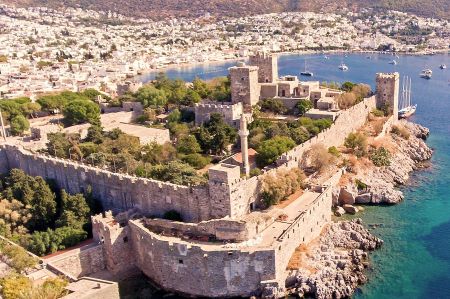Myndos Gate to Halicarnassos today Bodrum
- Written by Portal Editor
There is hardly any place around Bodrum (formerly called Halicarnassus) in which you will not find at least the foundations of a temple or the remnants of an ancient settlement. If you look at lot of the known names of Greek scientists, artists and scientists, you need to learn, that lot of them lived in today's Turkey.
Herodotus, Thales, Praxiteles and how they all were called, lived their time either in or close to Bodrum. Even Themistocles spent his last years in the near of Magnesia.
Mausoleum was considered one of the Seven Wonders of the Ancient World
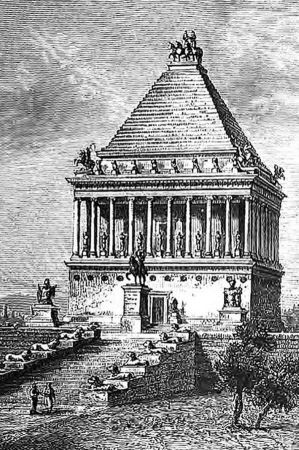 Bodrum is mainly famous for its legendary mausoleum, a tomb, the wife of the Persian satrap of Caria King Mausolus II., Artemisia erected during his lifetime already. The huge mausoleum was considered to be one of the Seven Wonders of the World, listed in Herodotus list. According to the ancient building, similar monuments are called "mausoleums" until today. It was probably destroyed by an earthquake in the 14th century; remains of the building were used in the Johanniter Castle St. Peter in Bodrum. Some of the sculptures were taken to the British Museum in London. Two original pieces of the Amazon frieze are in the museum, which is located on the former site of the mausoleum.
Bodrum is mainly famous for its legendary mausoleum, a tomb, the wife of the Persian satrap of Caria King Mausolus II., Artemisia erected during his lifetime already. The huge mausoleum was considered to be one of the Seven Wonders of the World, listed in Herodotus list. According to the ancient building, similar monuments are called "mausoleums" until today. It was probably destroyed by an earthquake in the 14th century; remains of the building were used in the Johanniter Castle St. Peter in Bodrum. Some of the sculptures were taken to the British Museum in London. Two original pieces of the Amazon frieze are in the museum, which is located on the former site of the mausoleum.
The museum was built with the financial and scientific assistance of Prof. Dr. Kristian Jeppesen from the Danish University of Aarhus and opened to visitors in 1982. Thanks to him excavations were carried out under his direction between 1966-72, important archaeological findings could be taken.
In the roofed part of the museum all finds of Mausolos and concerned finds of his time, ordered by scientific evidence, are issued. In semi-open part there is a plaster cast to see as a copy of the British Museum Amazon frieze. Also the architectural findings are issued.
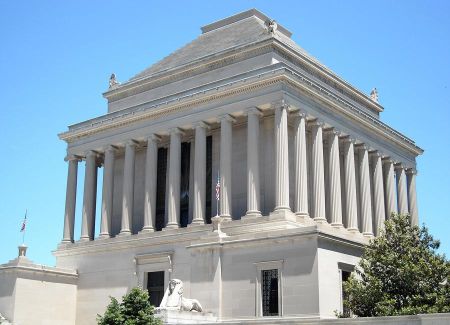 About 10 years later, the company Turkcell and Erikson were working on a project for the conservation of ancient treasures of Bodrum. Included in this project were the 7 kilometer-long city walls of Bodrum, the Myndos Gate and the Ottoman tower west of the port of Bodrum. The first phase of the project began on 15 July 1998 with archaeological excavations and cleaning around North and South Towers of Myndos gate. During the excavations many stone blocks were found, they were labeled and stored for future placements. 6 graves from the Roman period were discovered and the architectural plans of the area were drawn. The trenches, which had played an important role in the fight against the siege of Alexander the Great were marked and taken under protection (rebuild in Scotland).
About 10 years later, the company Turkcell and Erikson were working on a project for the conservation of ancient treasures of Bodrum. Included in this project were the 7 kilometer-long city walls of Bodrum, the Myndos Gate and the Ottoman tower west of the port of Bodrum. The first phase of the project began on 15 July 1998 with archaeological excavations and cleaning around North and South Towers of Myndos gate. During the excavations many stone blocks were found, they were labeled and stored for future placements. 6 graves from the Roman period were discovered and the architectural plans of the area were drawn. The trenches, which had played an important role in the fight against the siege of Alexander the Great were marked and taken under protection (rebuild in Scotland).
Myndos Gate and the Ottoman Tower
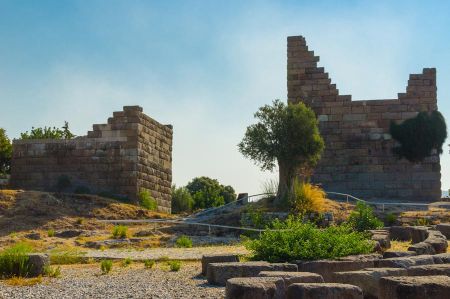 The Gateway of Myndos has two monumental towers, one of which has survived until the present day almost in its original form, measuring 7 by 8.5 metres. The Myndos Gate, locally called “Dikduru”, is located to the west of the city. It was one of the entrances to the ancient City of Halicarnassus.
The Gateway of Myndos has two monumental towers, one of which has survived until the present day almost in its original form, measuring 7 by 8.5 metres. The Myndos Gate, locally called “Dikduru”, is located to the west of the city. It was one of the entrances to the ancient City of Halicarnassus.
The tomb with 19 vaulted chambers has been restored. There are mosaics depicting vine leaves and birds. The moat has a width of 7 metres and its depth varies between 2 and 2.5 metres. It stretches to the east for 35 metres then turns south for 19 metres and ends with a last stretch of 22 metres. Because of the moat it was difficult for Alexander the Great to conquer Myndos. However, after the successful conquest and destruction of the city by him, Myndos would never be the same.
A Journey Back in Time to the Ancient Turkish Aegean - more details
Introduction – Why is the Myndos Gate so special?
Bodrum is known for its beautiful beaches and vibrant nightlife – but amidst the hustle and bustle, you'll find an impressive piece of world history: the Myndos Gate, a remnant of the ancient city walls of Halicarnassus. This gate is not just a stone on stone, but a silent witness to great battles, cultural upheavals, and fascinating stories.
Historical Overview
Dating back to the 4th century BC, the gate was part of a mighty city wall that protected Halicarnassus (now Bodrum). A fierce battle once raged here – and Alexander the Great was right in the middle of it.
The Significance of Myndos in Ancient Halicarnassus
Myndos was once an important access point to the city – a strategic location to repel attacks and welcome allies. Today, it is a place of tranquility and reflection.
The Myndos Gate – A Relic from the Time of Alexander the Great
Strategic Role in War
The Myndos Gate was not just any city gate. In 334 BC, Alexander the Great besieged Halicarnassus – and this is exactly where he intended to enter the city.
Siege by Alexander
But the defenders were prepared. They destroyed their own walls to confuse the attackers. Many of Alexander's troops lost their lives – legend says the attack on the Myndos Gate was one of his few failures.
Myths and Stories
 It is said that the ghosts of fallen soldiers still hover around the ancient stones. Whether you believe it or not, a visit here feels somewhat mystical.
It is said that the ghosts of fallen soldiers still hover around the ancient stones. Whether you believe it or not, a visit here feels somewhat mystical.
Archaeological Significance
For archaeologists, the gate is a valuable find. It offers insight into ancient architecture and military strategies of past centuries.
The Architecture of the Myndos Gate
Construction Method and Materials
The gate was built from large ashlar stones – solid, angular, and functional. Two round towers flank the entrance, which was once closed by a wooden gate.
Remains of the City Wall
Some sections of the original wall still extend several meters into the landscape – one can easily imagine how impressive the sight must have been back then.
Restoration Work and Current Condition
Thanks to careful restoration projects, the gate is well preserved today and safely accessible to visitors. Information panels provide background information in English and Turkish.
Local Experience – What to Expect When You Visit
Location and Surroundings
The gate is located a little outside of today's Bodrum city center, but is easily accessible. A short walk will take you straight back in time.
Best Time of Day to Visit
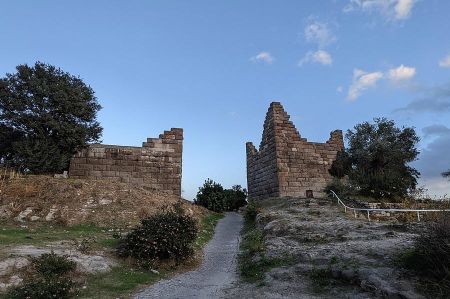 Early morning or evening, the light is particularly beautiful and it's less busy – perfect for photos and a moment of reflection.
Early morning or evening, the light is particularly beautiful and it's less busy – perfect for photos and a moment of reflection.
Admission, Opening Hours & Tipps
Admission is free, and the site is accessible 24/7. Remember sunscreen and water – there's hardly any shade!
Discover nearby – More than just a gate
Sights around Bodrum
While you're there, don't miss the other highlights:
Bodrum Castle
A mighty fortress with a magnificent view of the sea – and today a must-see museum of underwater archaeology.
Mausoleum at Halicarnassus
Once one of the Seven Wonders of the Ancient World – today an impressive ruin site steeped in history.
Food and Culture
After so much history, treat yourself to a delicious meal: Try fresh fish, meze, and a glass of raki while watching the sunset.
Significance to Turkish Culture and History
 Symbol of Resilience
Symbol of Resilience
The Myndos Gate symbolizes the courage and strength of the people of that time. It reminds us that even small towns can make great history.
Educational and Cultural Heritage
Schools, universities, and cultural associations use the gate today as a learning center. It inspires and informs – for generations to come.
Tips for History-Buffalo Travellers
Guided tours or self-guided?
Both have their appeal. If you want to delve deeper, it's best to book a guided tour with a local historian.
What You Absolutely Need to Know
Take your time – this isn't about "checking off the list," it's about experiencing. Every stone tells a story.
Conclusion – Why the Myndos Gate is a Must-See
The Myndos Gate is much more than a historical monument – it's a silent witness to history, a place of wonder, and a bridge between past and present. If you're in Bodrum, don't miss this special corner of history. It's worth the trip – we promise!
FAQs about the Myndos Gate in Bodrum
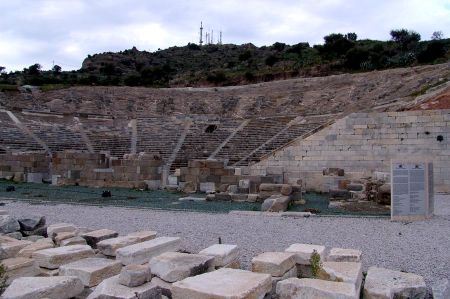 1. Where exactly is the Myndos Gate?
1. Where exactly is the Myndos Gate?
Just outside Bodrum city centre, to the west – easily accessible on foot.
2. Is there parking nearby?
Yes, there are smaller streets nearby with parking.
3. Do I have to pay an entrance fee?
No, the visit is free.
4. Is the site wheelchair accessible?
Not entirely, as it's a historic site with uneven ground.
5. Is a guided tour worth it?
Absolutely! With a guide, you'll learn fascinating stories and details you might otherwise easily miss.
Please read as well:
Mausoleum at Halicarnassus - Artemisia and King Mausolos
Bodrum - The Archaeological Underwater Museum
-
 Gate of Myndos - Halicarnassos
Gate of Myndos - Halicarnassos
Gate of Myndos - Halicarnassos
Gate of Myndos - Halicarnassos
-
 Gate of Myndos - Halicarnassos
Gate of Myndos - Halicarnassos
Gate of Myndos - Halicarnassos
Gate of Myndos - Halicarnassos
-
 Gate of Myndos - Halicarnassos
Gate of Myndos - Halicarnassos
Gate of Myndos - Halicarnassos
Gate of Myndos - Halicarnassos
-
 Gate of Myndos - Halicarnassos
Gate of Myndos - Halicarnassos
Gate of Myndos - Halicarnassos
Gate of Myndos - Halicarnassos
-
 Gate of Myndos - Halicarnassos
Gate of Myndos - Halicarnassos
Gate of Myndos - Halicarnassos
Gate of Myndos - Halicarnassos
-
 Gate of Myndos - Halicarnassos
Gate of Myndos - Halicarnassos
Gate of Myndos - Halicarnassos
Gate of Myndos - Halicarnassos
-
 Gate of Myndos - Halicarnassos
Gate of Myndos - Halicarnassos
Gate of Myndos - Halicarnassos
Gate of Myndos - Halicarnassos
-
 Gate of Myndos - Halicarnassos
Gate of Myndos - Halicarnassos
Gate of Myndos - Halicarnassos
Gate of Myndos - Halicarnassos
-
 Gate of Myndos - Halicarnassos
Gate of Myndos - Halicarnassos
Gate of Myndos - Halicarnassos
Gate of Myndos - Halicarnassos
-
 Gate of Myndos - Halicarnassos
Gate of Myndos - Halicarnassos
Gate of Myndos - Halicarnassos
Gate of Myndos - Halicarnassos
-
 Gate of Myndos - Halicarnassos
Gate of Myndos - Halicarnassos
Gate of Myndos - Halicarnassos
Gate of Myndos - Halicarnassos
-
 Gate of Myndos - Halicarnassos
Gate of Myndos - Halicarnassos
Gate of Myndos - Halicarnassos
Gate of Myndos - Halicarnassos
https://www.alaturka.info/en/turkey-country/aegean/1598-myndos-gate-bodrum#sigProId84a80d6f06
